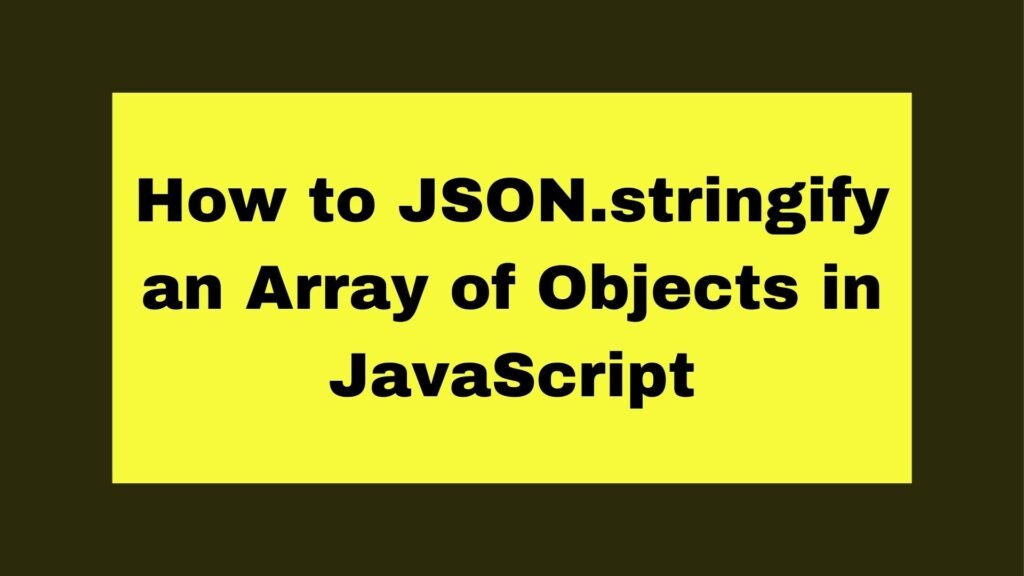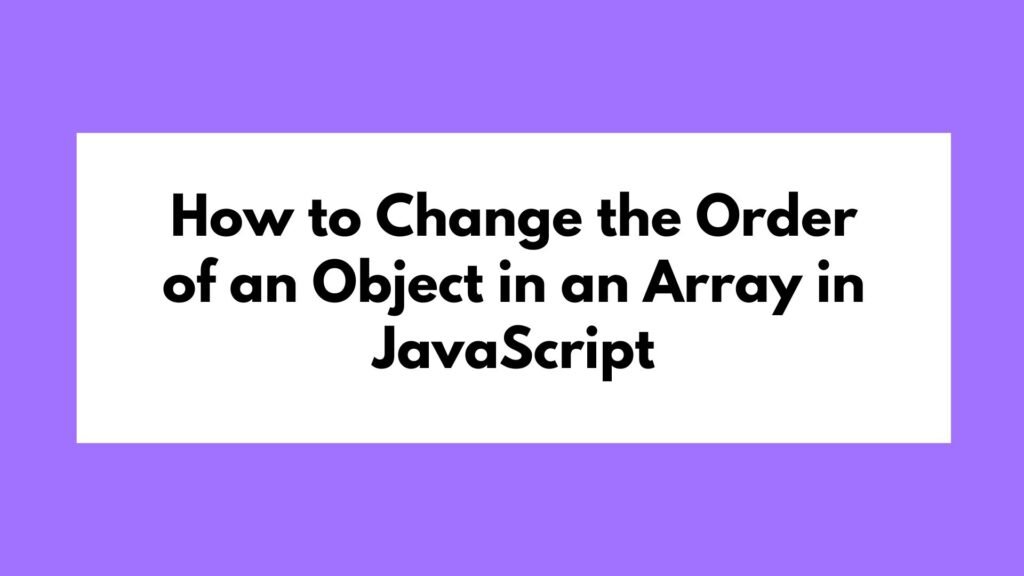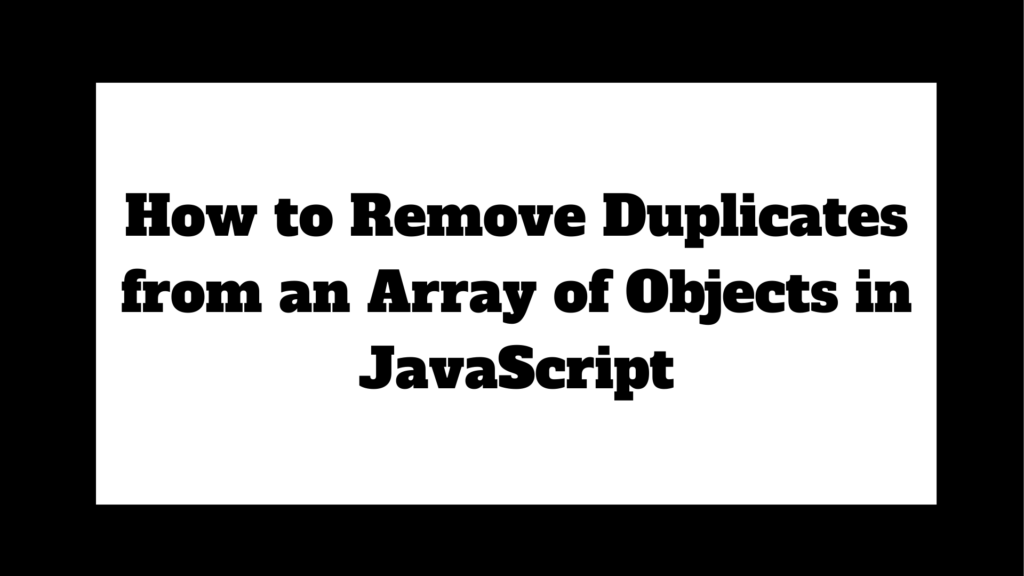
Converting an array of objects to a JSON string is a common task in JavaScript, especially when dealing with data exchange between a client and a server. This guide will show you how to use JSON.stringify() to serialize an array of objects, with code examples and explanations.
let arrayOfObjects = [
{ name: "John", age: 30 },
{ name: "Jane", age: 25 },
{ name: "Jim", age: 35 }
];
let jsonString = JSON.stringify(arrayOfObjects);
console.log(jsonString);
// Output: '[{"name":"John","age":30},{"name":"Jane","age":25},{"name":"Jim","age":35}]'
To convert an array of objects to a JSON string in JavaScript, use the JSON.stringify() method.
Methods on How to JSON.stringify an Array of Objects in JavaScript
JSON.stringify() is a built-in method in JavaScript that converts a JavaScript object or value to a JSON string. This is especially useful when you need to send data to a server or save it in a format that can be easily stored and retrieved. This article will focus on how to use this method to serialize an array of objects.
Basic Usage of JSON.stringify()
The most straightforward use of JSON.stringify() is to pass the array of objects directly to the function.
Example 1: Basic Usage
let arrayOfObjects = [
{ name: "John", age: 30 },
{ name: "Jane", age: 25 },
{ name: "Jim", age: 35 }
];
let jsonString = JSON.stringify(arrayOfObjects);
console.log(jsonString);
// Output: '[{"name":"John","age":30},{"name":"Jane","age":25},{"name":"Jim","age":35}]'
This converts the array of objects into a JSON string that can be sent over a network or stored in local storage.
Formatting the JSON String
JSON.stringify() can also format the output with indentation and line breaks, making it more readable.
Example 2: Formatting with Indentation
let jsonString = JSON.stringify(arrayOfObjects, null, 2);
console.log(jsonString);
/* Output:
[
{
"name": "John",
"age": 30
},
{
"name": "Jane",
"age": 25
},
{
"name": "Jim",
"age": 35
}
]
*/
The third parameter of JSON.stringify() is the number of spaces used for indentation. In this example, 2 spaces are used.
Handling Circular References
A circular reference occurs when an object references itself, directly or indirectly. JSON.stringify() will throw an error when it encounters a circular reference.
Example 3: Circular References
let obj1 = { name: "John" };
let obj2 = { name: "Jane", ref: obj1 };
obj1.ref = obj2;
try {
let jsonString = JSON.stringify([obj1, obj2]);
} catch (error) {
console.error("Error: Circular reference detected");
}
In this case, you can handle circular references by using a replacer function or third-party libraries like circular-json.
Using Replacer Functions
The replacer function in JSON.stringify() allows you to customize the serialization process. This can be used to filter out specific properties or handle complex data types.
Example 4: Using a Replacer Function
let jsonString = JSON.stringify(arrayOfObjects, (key, value) => {
if (typeof value === 'number' && value > 30) {
return undefined; // Exclude properties with values greater than 30
}
return value;
}, 2);
console.log(jsonString);
/* Output:
[
{
"name": "John"
},
{
"name": "Jane",
"age": 25
},
{
"name": "Jim"
}
]
*/
Conclusion
JSON.stringify() is an essential tool for converting arrays of objects into JSON strings in JavaScript. Whether you need to serialize data for network transmission, storage, or debugging, understanding how to use JSON.stringify() effectively is crucial.
By mastering the basic usage, formatting options, handling circular references, and utilizing replacer functions, you can tailor the serialization process to meet your specific needs in any JavaScript project.


